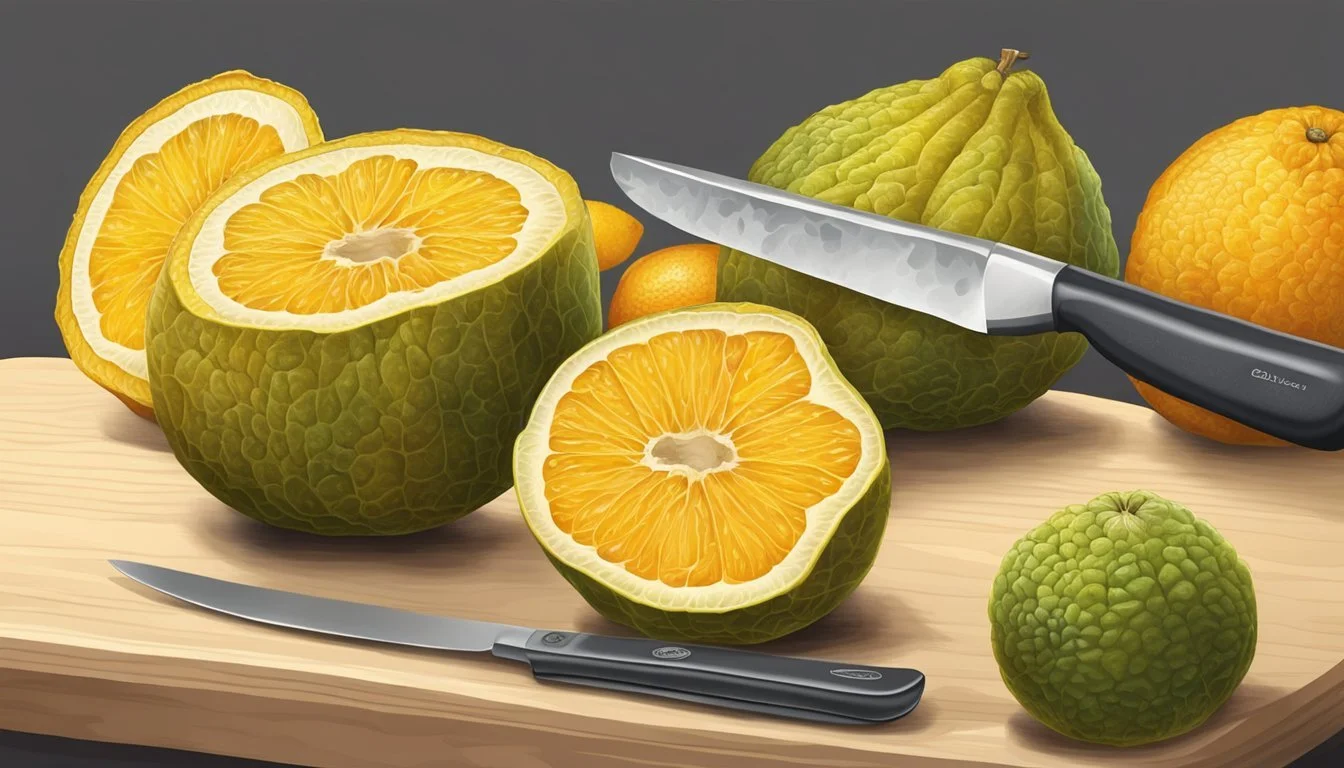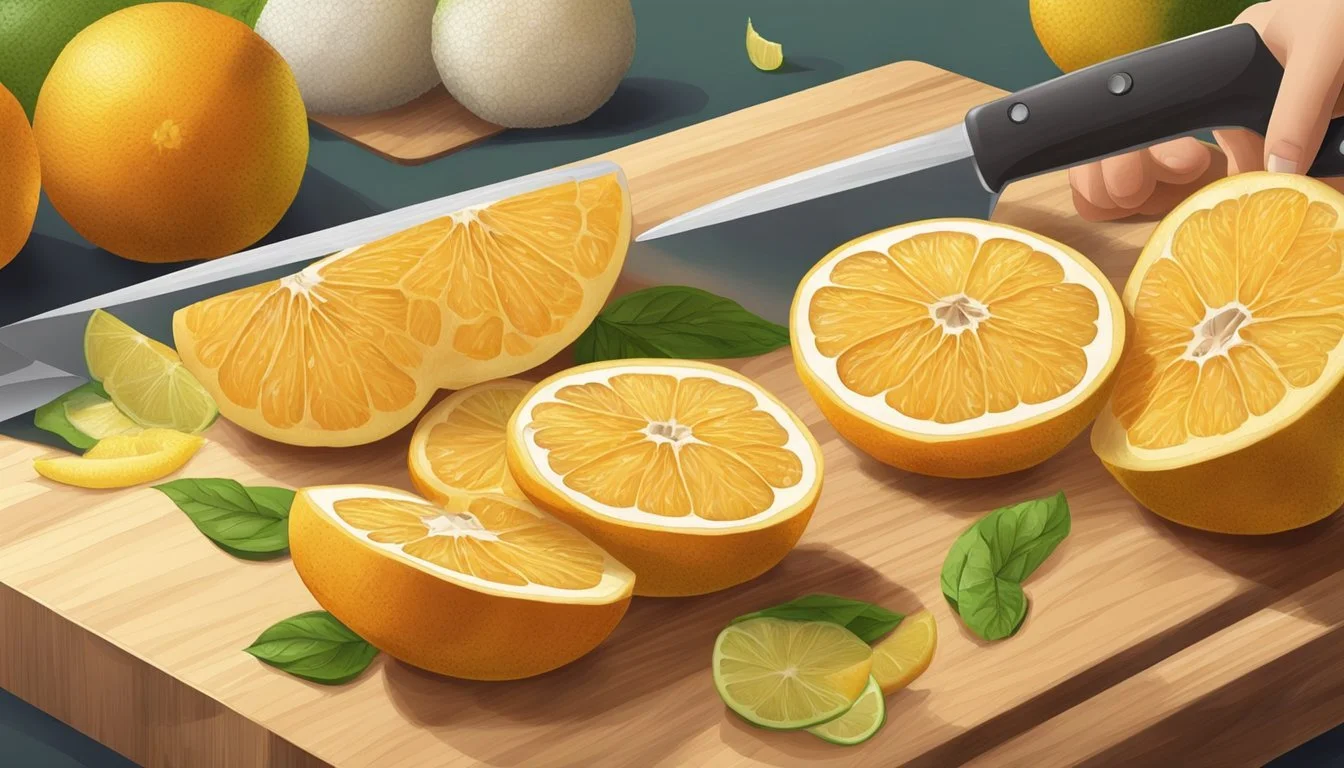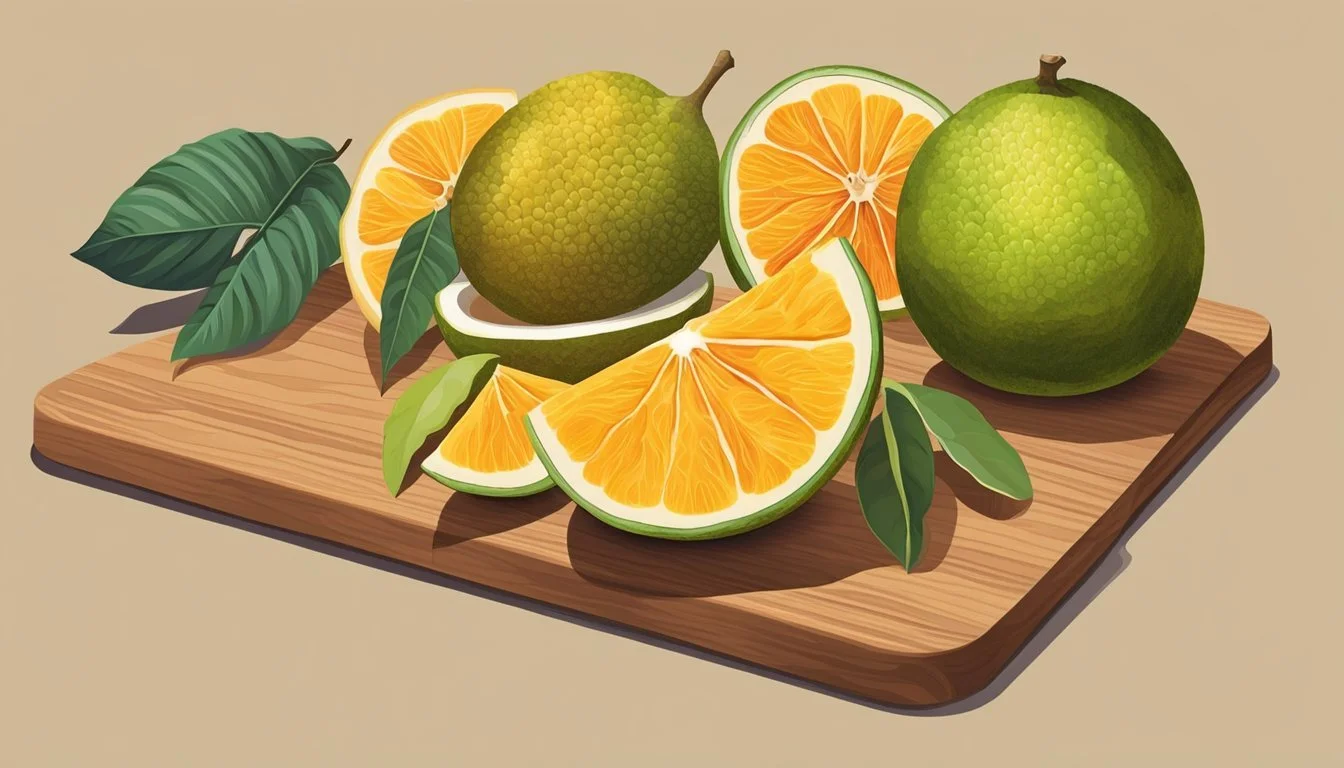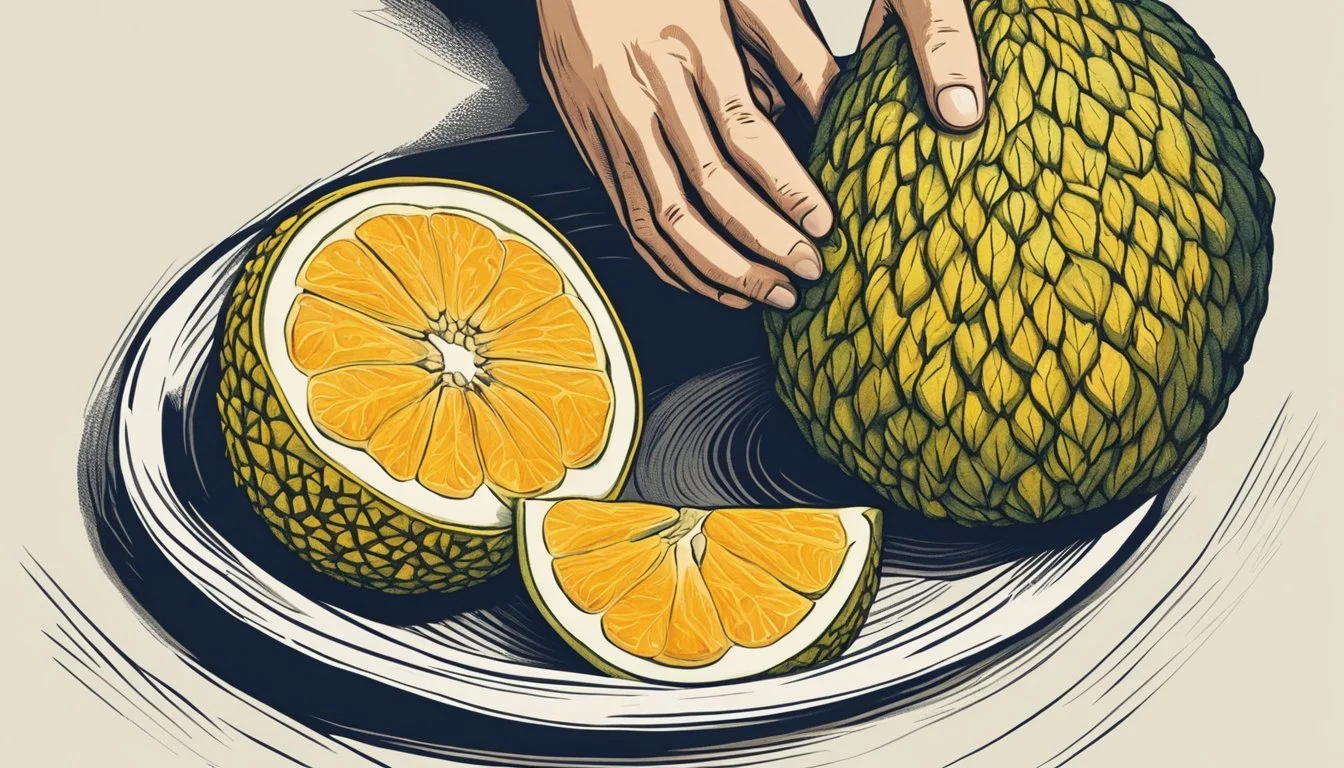How do you eat ugli fruit?
Easy Steps for Enjoying this Unique Citrus
Ugli fruit (What wine goes well with fruit?) is a unique citrus fruit hailing from Jamaica, where it was discovered over 80 years ago. Known scientifically as a tangelo, this Jamaican tangelo is a delightful hybrid, combining the best traits of a grapefruit, an orange, and a tangerine. Its unusual appearance is characterized by a rough, wrinkled, greenish-yellow skin which belies its juicy, sweet, and slightly tangy flavor that has garnered it appreciation worldwide.
Often marketed under the brand name 'Uniq Fruit,' ugli fruit is celebrated not only for its distinct taste but also for its nutritional value. Rich in vitamin C and dietary fiber, this exotic fruit adds a refreshing variety to the citrus fruit family, making it a popular choice for those seeking a nutritious alternative to the standard citrus offerings. Moreover, it stands out among other fruits (What wine goes well with fruits?) for its ease of consumption.
Identifying and Selecting Ugli Fruit
Choosing the right ugli fruit involves understanding its unique appearance, assessing its ripeness, and knowing where to find it. Here's a look at how to identify and select the best ugli fruit for consumption.
Understanding the Appearance
Ugli fruit, a tangelo variety, is known for its distinct appearance. Typically, it appears larger than an orange, with a diameter ranging from 4 to 6 inches. The skin of an ugli fruit has a rough, wrinkled texture, and it's not uncommon for it to bear blemishes. Despite its uneven coloring, which can vary from green to yellow or orange, the fruit is perfectly suitable for eating.
Assessing Ripeness
When selecting an ugli fruit, one should look for a sweet aroma, which indicates a ripe fruit. The skin should yield slightly under pressure, but be wary of overly soft spots, as they may signal over-ripeness or spoilage. Ripe ugli fruits often exhibit a slight wrinkling of the skin, but these wrinkles should not detract from the overall firmness of the fruit.
Where to Purchase
Ugli fruit is most commonly available in the U.S., Europe, and Canada, particularly during its peak season from December through April. Shoppers can usually find ugli fruits in supermarkets with a well-stocked produce section or in specialty markets that carry tropical fruits. When purchasing ugli fruit, consumers should opt for those that feel heavy for their size, a sign of juiciness and flavor.
Nutritional Profile
The ugli fruit boasts a considerable amount of vitamin C and fiber, positioning it as a nutritious choice with a multitude of health benefits.
Vitamins and Minerals Content
Ugli fruit is notably rich in vitamin C, with an average fruit providing approximately 42 milligrams, which is about 70 percent of the daily value (DV). It also contains vitamin A, essential for eye health, immune function, and skin integrity. When it comes to minerals, ugli fruit offers calcium—around 20 milligrams (2 percent DV).
Health Benefits
The high vitamin C content in ugli fruit renders it an excellent antioxidant, which can help in fighting free radicals and supporting the immune system. Its dietary fiber aids digestion and may contribute to lowering cholesterol levels. The presence of flavonoids and other antioxidants further bolsters its health-promoting properties. Additionally, being low in calories yet containing modest amounts of protein and potassium, ugli fruit presents an impressive nutrient profile that supports overall health.
Preparation and Consumption
The ugli fruit, a tangy and sweet hybrid between a tangerine and a grapefruit, offers versatility in preparation and consumption. Here are the steps to enjoy this juicy citrus fruit.
Peeling and Segmenting
To begin, one should wash the ugli fruit thoroughly under running water. With its thick, bumpy skin, ugli fruit is known for being easy to peel. One can start by cutting off the top and bottom of the fruit, allowing it to sit flat on a surface. Then, using a paring knife, one should make vertical cuts to peel the skin away, removing any excess pith. Inside, the fruit is divided into segments, much like an orange or mandarin, making it convenient to consume.
Serving Suggestions
Ugli fruit can be savored in its simplest form by separating it into segments and eating them directly, which showcases its juicy and vibrant taste. It also serves as a refreshing snack or a sweet note to end a meal. For a more decorative presentation, the segments can be arranged on a platter or layered in a fruit salad to add a burst of color and a tangy flavor. Additionally, the ugli fruit may be squeezed to make a refreshing juice, perfect for breakfast or as a dessert beverage.
Creative Recipes
Incorporating ugli fruit into recipes adds a creative twist to traditional dishes. Here are some ideas:
Salsas: Enhance a mixture of diced tomatoes, minced garlic, and basil with ugli fruit segments for a fresh salsa or combine it with kiwi, jalapeno, cilantro, lime juice, and red onion for a tropical take.
Desserts: Brighten up desserts by topping cakes or incorporating ugli fruit into sorbets. The sweet citrus flavor pairs well with creamy or rich desserts.
Salads: Toss ugli fruit segments into green or fruit salads for a juicy, tangy addition. Pairing with avocado or mixed greens complements the flavors.
By experimenting with these preparations and ideas, one can fully appreciate the unique taste and versatility of ugli fruit in their culinary endeavors.
Incorporating Ugli Fruit into Diets
Incorporating ugli fruit into a diet can offer a boon for those targeting weight loss due to its low caloric profile and dietary fiber content. It's also suitable for people with certain dietary restrictions because it's naturally low in sugar.
Weight Loss Advantages
Ugli fruit is an asset for individuals looking to reduce their caloric intake while still obtaining essential nutrients. It brings a low-calorie option to meals and snacks:
Calories: Approximately 47 calories for half an ugli fruit (about 100 grams)
Fiber: 2 grams per 100 grams, which aids in creating a feeling of fullness and can help reduce appetite
Sugar: Naturally low in sugar, it satisfies sweet cravings without significantly impacting blood glucose levels
Eating ugli fruit can complement a balanced diet and exercise routine for weight loss. Its dietary fiber is beneficial as it helps to slow digestion, potentially aiding in weight management.
Dietary Restrictions
For those with dietary concerns such as diabetes, ugli fruit is a suitable choice because of its lower sugar content. It can be especially:
Diabetes-friendly: The fruit's low glycemic impact helps in maintaining stable blood sugar levels
Immune system support: While being low in sugar and calories, ugli fruit does not compromise on nutrients that can bolster the immune system
Moreover, its hypoallergenic properties make ugli fruit a potential inclusion in diets where certain fruits cannot be consumed due to allergy concerns.
Health Implications
Eating ugli fruit provides a variety of health benefits due to its rich nutritional content, notably the high levels of vitamin C, fiber, and antioxidants. It supports the circulatory and immune systems, contributes to bone and vision health, and may aid in maintaining healthy skin.
Circulatory and Immune System
Ugli fruit is abundant in vitamin C, a powerful antioxidant that is essential for the healthy function of the immune system. Vitamin C stimulates white blood cell production, which are pivotal in fighting infections and diseases. Antioxidants in ugli fruit also combat free radicals, reducing the risk of chronic diseases such as cancer and stroke. Additionally, the dietary fiber present may help maintain healthy cholesterol levels, promoting good circulatory health.
Bone and Vision Support
The calcium found in ugli fruit is vital for bone health, helping to maintain bone density and strength. Ugli fruit also contains vitamin A, which plays a crucial role in supporting eye health, potentially reducing the risk of age-related vision issues. Regular consumption of ugli fruit may offer bolstered defense against bone degeneration and ocular diseases.
Skin Health
Vitamin C’s role in collagen production is beneficial for skin health, aiding in the repair and growth of tissues, which in turn may help reduce the appearance of blemishes. As vitamin C can lower inflammation, it may be helpful for managing conditions like psoriasis and rosacea, promoting an even skin tone and a reduction in redness. Moreover, the antioxidants help in shielding the skin from damage caused by environmental factors and reducing signs of aging.
Storage and Shelf Life
Maintaining the freshness of ugli fruit is crucial for enjoying its unique taste. Proper storage techniques extend its shelf life, enabling you to savor the fruit at its best.
At Home Storage
Ugli fruit can be stored at room temperature, typically remaining fresh for up to five days when kept in a well-ventilated space away from direct sunlight. For extended preservation, one should place the ugli fruit in a plastic bag and refrigerate it. In the colder environment of a refrigerator, the ugli fruit's shelf life can stretch up to two weeks.
Signs of Spoilage
Vigilance is key in detecting spoilage of ugli fruit. Consumers should look for:
Soft spots: Which may indicate the fruit is past its best.
Off-odors: A signal that the fruit is turning sour or fermenting.
Color changes: A significant darkening of the skin could imply spoilage.
One should inspect the ugli fruit daily, especially if stored in the refrigerator, to ensure it remains in optimal condition for consumption.
Culinary Uses and Pairings
Ugli fruit's versatile nature makes it suitable for various culinary applications, notably enhancing beverages and baked goods. Its unique flavor profile, balancing sweet and tangy nuances, pairs well with a range of ingredients, thus providing a tropical twist to traditional recipes.
Beverages and Smoothies
In beverages, ugli fruit's distinct, tart flavor makes it popular for use in smoothies and juices. Its flesh, akin to that of a grapefruit but sweeter, can be combined with pineapple to accentuate the tropical taste. For a refreshing ugli fruit smoothie, one may blend the fruit's segments with a sweetener of choice to offset its slight bitterness. During peak season, the fruit's juices yield a tangier punch, suitable for revitalizing citrus smoothies.
Smoothie Recipe Example:
1 ugli fruit (peeled and segmented)
1/2 cup pineapple (for added tropical sweetness)
Sweetener (like honey, to taste)
Ice cubes (optional for a chilled variant)
Blend all ingredients until smooth. The use of a juicer can also extract the fruit's juice for a concentrated base in mixed drinks or as part of a tangy marmalade when the juiced fruit is simmered with sugar and pectin.
Cooking and Baking
Ugli fruit's adaptability extends to cooking and baking, where it can be employed in desserts that call for citrus fruits. The flesh and zest can add a zesty punch to cakes, muffins, and tarts. Its peel, when candied, contributes a unique flavor profile to sweet dishes.
Dessert Pairings:
Zest in lemon tarts (replacing lemon with ugli fruit for a different twist)
Segments in fruit salads (combine with other tropical fruits)
The inherent sweetness and tartness work together, so additional sweeteners may be adjusted accordingly. Chefs should consider the intensity of the fruit's flavor when in or out of season; as a rule, the fruit is generally less tart during its peak season.
Cultural Significance
The ugli fruit, also known as the Jamaican tangelo, is an emblematic citrus fruit of Jamaica. It embodies a blend of diverse citrus lineages, including the grapefruit, the orange, and the mandarin. The origin of the ugli fruit is rooted in the island's agricultural creativity, where it naturally arose as a hybrid.
Jamaica takes pride in this unique fruit, which is not only part of its agricultural heritage but has also become synonymous with its cultural identity. While ugli fruit might initially be known for its unconventional appearance, its significance extends much further:
National Identity: Ugli fruit holds a place in the heart of Jamaican culture, contributing to national pride and symbolizing the island's rich biodiversity.
Harvest Season: Every November marks the peak season for ugli fruit, aligning with festivities and events that celebrate local produce.
Table 1: Ugli Fruit in Jamaican Culture
Aspect Relevance to Jamaica Hybrid Origin Symbolizes agricultural ingenuity Name Reflects the candid nature of Jamaican culture Culinary Use Used in traditional and contemporary Jamaican recipes
The Jamaican tangelo, due to its distinctiveness and flavor profile, enhances various dishes and has incorporated itself into culinary practices, representing an intersection of tradition and innovation. It has also influenced other cultures, introducing a new facet to the global citrus fruit palate. Ugli fruit remains a testament to Jamaica's contribution to the world's extensive list of citrus fruits.
Tips and Tricks
When eating ugli fruit, one can enjoy a pleasant experience with the right techniques. The fruit is often easy to peel when ripe and offers a juicy taste that's a blend of sweetness and tanginess. These tips and tricks ensure one can handle the fruit properly and savor its unique flavor.
Peeling Techniques
To peel an ugli fruit, gently use a sharp paring knife or your fingers, as the rind typically comes off more easily than that of an orange. If the fruit is ripe, the peel should loosen without much effort. One should:
Start by cutting the top and bottom off the ugli fruit to give a stable base.
Carefully slide the knife under the skin, working it around the fruit to remove the peel and the white pith.
Alternatively, if the skin is loose enough, one may peel it with their fingers, similar to how one might peel a tangerine.
Seed Handling
Ugli fruit may contain seeds, which vary in number. When one encounters seeds, they should:
Use the tip of the knife or fingers to gently remove any visible seeds before consuming.
Be mindful while eating, as seeds can be nestled within the flesh and may not be immediately apparent.
Remember, the intent is to protect the integrity of the fruit's flesh, as it is quite juicy and one wants to maximize the amount they can enjoy.







